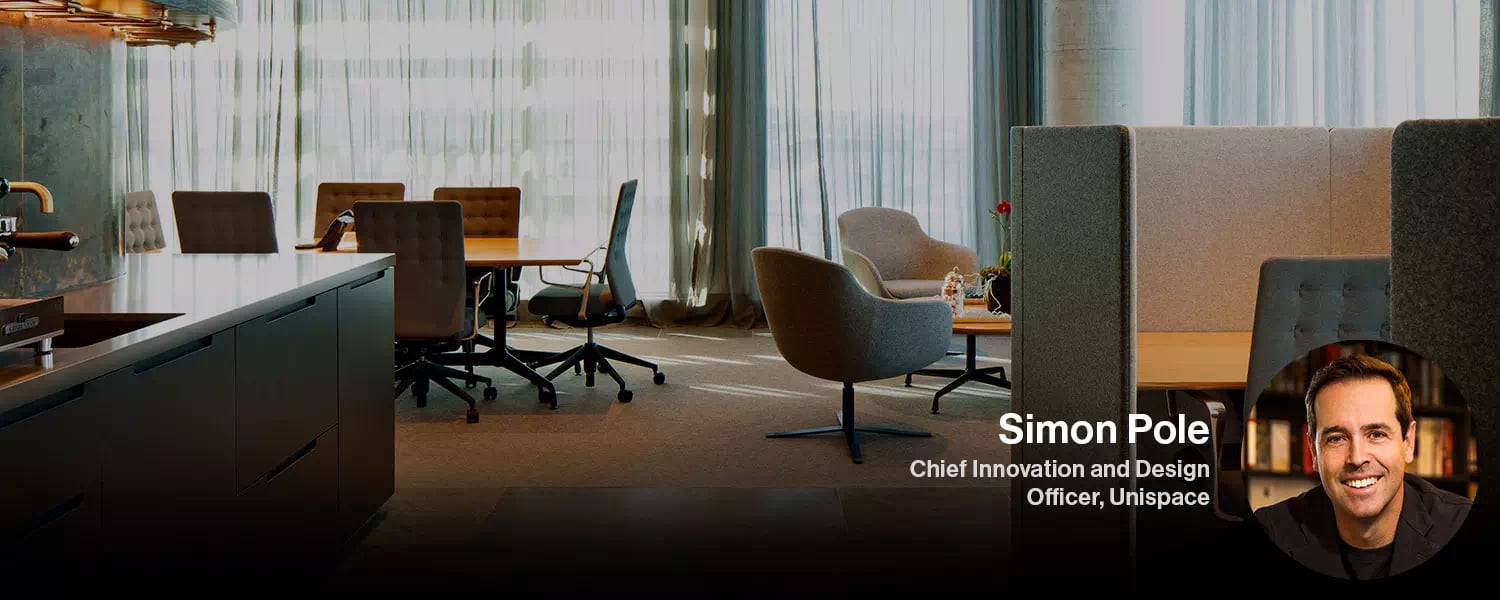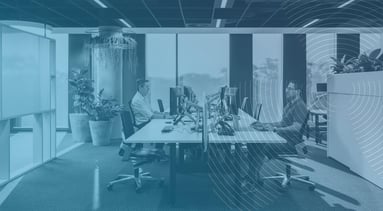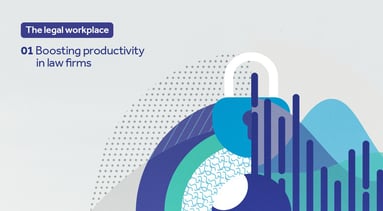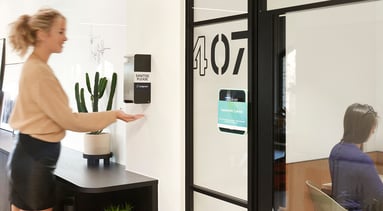Creating a "destination office" for top legal talent

It goes without saying, the pandemic has changed the workplace forever, prompting organizations to re-evaluate ways of working.
Law firms are no exception – they know that setting up a truly experiential workplace, with well-considered interior design, can be crucial in attracting and retaining top talent, writes Simon Pole.
After more than two years of the Covid-19 pandemic, employee expectations have evolved, and the legal industry is no exception. We know from our data that both new graduates and top talent are looking for roles with greater flexibility.
While responding to this need, many of our legal clients have also been looking to optimize their office space; redesigning their workplaces to create an attractive and engaging experience that reflects their culture and helps their people to do their best work, while balancing the total net area they’re paying for.
So, what are the common themes we're seeing in these new legal spaces?
- Less demand for individually owned desks and offices, or in instances where a firm has agreed to provide individually allocated spaces, these spaces are reduced in size.
- An emphasis on creating more shared spaces, for example, space where small teams can collaborate and share knowledge adjacent to the work desks without disturbing others.
- More wellness-centric spaces, such as truly quiet rooms and spaces for respite and reflection, allowing for the ability to reframe the problem or adjust the solution.
Social and connection spaces are becoming increasingly important for firms
Due to the limited time people are physically spending together, there is a need for spaces that support bonding and social networking among teams, such as semi-private spaces for conversation, or casual spaces with more comfortable seating and appropriate lighting.
Gone are the days of the large open canteen offering ultimate flexibility by stacking the chairs and tables. While spaces for large gatherings are important, people are looking for spaces to have more intimate and private conversations for building relationships and trust in a short period of time.
Law firms are not tech companies. While there are some similarities with some teams requiring deep focus and high levels of concentration, gathering large groups of people weekly for town hall meetings is not part of the modus operandi for most firms. Bleacher seating and large open spaces wrapped around a café or bar for sports events and celebrations is in stark contrast to the types of spaces required for firms to provide updates and hold seminars for networking and business development. These more intimate spaces must now consider attendees calling in on video who should not be a postage stamp on the screen, but at least life-size faces within the room.
There is also increased demand by graduates and junior associates for learning, mentoring and access to subject matter experts. Proximity provides the opportunity for ‘bumping into’ the firm’s ‘knowledge connectors’ to execute tasks more efficiently. This is an advantage for both the employee and the firm as it accelerates their learning and exposure to differing types of clients and matters.
For more workplace data and global insights, download our legal white paper ‘The legal workplace for tomorrow’s talent: create experiential firms’.
How are law firms transforming their workplace?
We understand that some of our legal clients have traditional cellular offices and conventional workspace layouts. Depending on your firm’s starting point, you may not want to stretch immediately to unallocated desking with a high sharing ratio and communal lockers. We’re having conversations with many legal clients exploring alternative layouts and design solutions, to help firms understand what ‘transformation’ means for them.
Having completed extensive observations of over 100 work settings to define factors such as average desk occupancy and the kinds of spaces that enable teams to function best, we have found that five hybrid models work best for our legal clients.
Learn more about these five models in our white paper ‘The legal workplace for tomorrow’s talent – creating an experiential firms’, download today.
We are now in an era where there is no one-size-fits-all or universal legal office solution. We have more data and we understand how Practice Groups can work more effectively with the right solutions for their workspace. Many recruiters are now being asked about the type of work environment that candidates will be spending their time in. Providing the best solution for your team will support talent retention and attraction.
Interested in more legal workplace insights? Download our white paper ‘The legal workplace for tomorrow’s talent: create experiential firms’.
Ready to explore how your firm can attract and retain top talent? Fill out our enquiry form.


